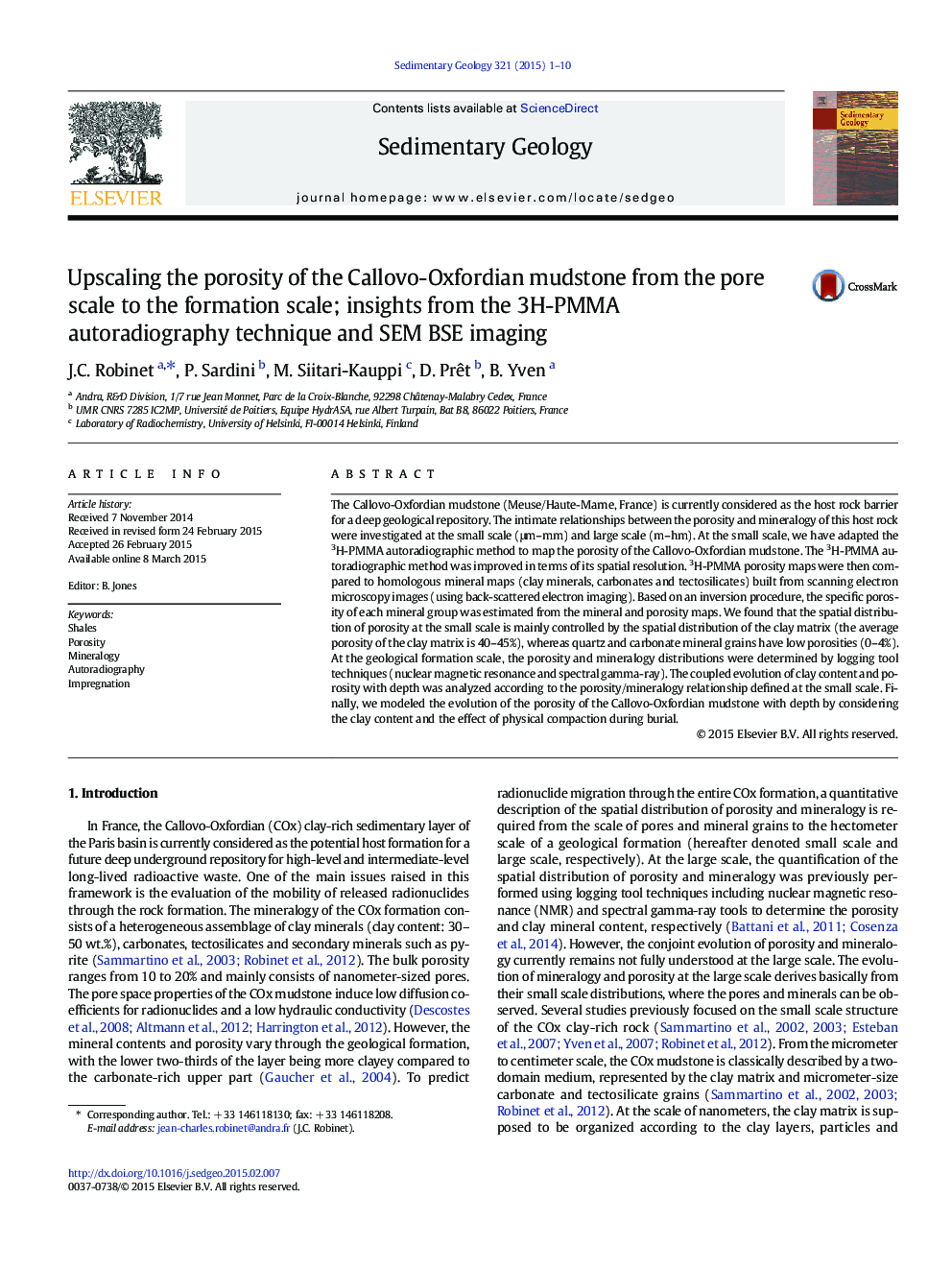| Article ID | Journal | Published Year | Pages | File Type |
|---|---|---|---|---|
| 4689211 | Sedimentary Geology | 2015 | 10 Pages |
Abstract
The Callovo-Oxfordian mudstone (Meuse/Haute-Marne, France) is currently considered as the host rock barrier for a deep geological repository. The intimate relationships between the porosity and mineralogy of this host rock were investigated at the small scale (μm-mm) and large scale (m-hm). At the small scale, we have adapted the 3H-PMMA autoradiographic method to map the porosity of the Callovo-Oxfordian mudstone. The 3H-PMMA autoradiographic method was improved in terms of its spatial resolution. 3H-PMMA porosity maps were then compared to homologous mineral maps (clay minerals, carbonates and tectosilicates) built from scanning electron microscopy images (using back-scattered electron imaging). Based on an inversion procedure, the specific porosity of each mineral group was estimated from the mineral and porosity maps. We found that the spatial distribution of porosity at the small scale is mainly controlled by the spatial distribution of the clay matrix (the average porosity of the clay matrix is 40-45%), whereas quartz and carbonate mineral grains have low porosities (0-4%). At the geological formation scale, the porosity and mineralogy distributions were determined by logging tool techniques (nuclear magnetic resonance and spectral gamma-ray). The coupled evolution of clay content and porosity with depth was analyzed according to the porosity/mineralogy relationship defined at the small scale. Finally, we modeled the evolution of the porosity of the Callovo-Oxfordian mudstone with depth by considering the clay content and the effect of physical compaction during burial.
Related Topics
Physical Sciences and Engineering
Earth and Planetary Sciences
Earth-Surface Processes
Authors
J.C. Robinet, P. Sardini, M. Siitari-Kauppi, D. Prêt, B. Yven,
